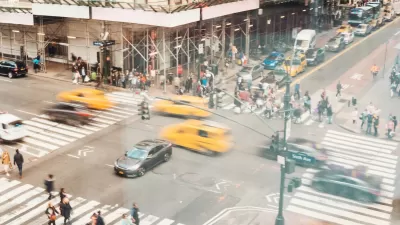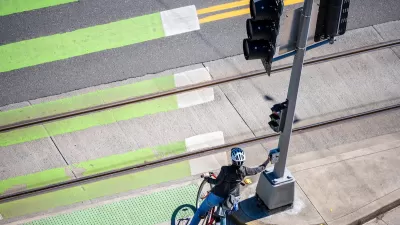A post on the Rivard Report details the efforts underway in San Antonio, Texas, to reduce traffic fatalities.
Mike Frisbie shares the progress of the city of San Antonio toward its Vision Zero goals, as established in September 2015.
Already, the city has begun implementation of its Vision Zero goals with the following actions:
Program enhancements have included $1 million toward pedestrian safety improvements for school zone upgrades and pavement markings in 2015, plus an additional $1 million for school zones in 2016. $15 million was allocated in 2016 to add new sidewalks, $10 million more than the typical budget amount of $5 million. Innovative tools such as overhead pedestrian flashing signals have been installed city wide, and Z-Crossings on streets such as Broadway, Culebra, and Commerce are also being constructed to further enhance pedestrian safety.
The article also includes all the key links to dig into the entire package of Vision Zero efforts by the city of San Antonio.
FULL STORY: Commentary: City Makes Strides Toward Vision Zero

Planetizen Federal Action Tracker
A weekly monitor of how Trump’s orders and actions are impacting planners and planning in America.

Map: Where Senate Republicans Want to Sell Your Public Lands
For public land advocates, the Senate Republicans’ proposal to sell millions of acres of public land in the West is “the biggest fight of their careers.”

Restaurant Patios Were a Pandemic Win — Why Were They so Hard to Keep?
Social distancing requirements and changes in travel patterns prompted cities to pilot new uses for street and sidewalk space. Then it got complicated.

Platform Pilsner: Vancouver Transit Agency Releases... a Beer?
TransLink will receive a portion of every sale of the four-pack.

Toronto Weighs Cheaper Transit, Parking Hikes for Major Events
Special event rates would take effect during large festivals, sports games and concerts to ‘discourage driving, manage congestion and free up space for transit.”

Berlin to Consider Car-Free Zone Larger Than Manhattan
The area bound by the 22-mile Ringbahn would still allow 12 uses of a private automobile per year per person, and several other exemptions.
Urban Design for Planners 1: Software Tools
This six-course series explores essential urban design concepts using open source software and equips planners with the tools they need to participate fully in the urban design process.
Planning for Universal Design
Learn the tools for implementing Universal Design in planning regulations.
Heyer Gruel & Associates PA
JM Goldson LLC
Custer County Colorado
City of Camden Redevelopment Agency
City of Astoria
Transportation Research & Education Center (TREC) at Portland State University
Camden Redevelopment Agency
City of Claremont
Municipality of Princeton (NJ)





























